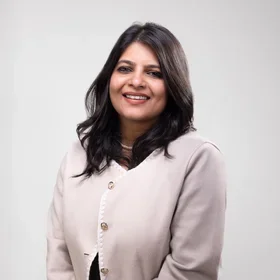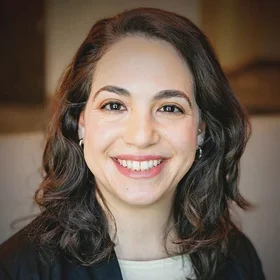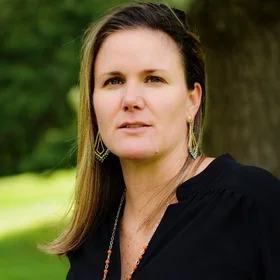When Sarah Higgins learned that her job as a Navy public affairs officer would take her to New York City, she decided that it was time for her to pursue a master’s degree. Assessing her options, she discovered Columbia’s Strategic Communications program, which would elevate her skills and allow her to continue to work full-time. Armed with knowledge not just in PR but also advertising, marketing, corporate communications and more, she brings to her newest role in the Navy an understanding of how to use audience research to power an improved communications plan. Over the phone from her new home in Seattle, WA, we discussed her duties in the Navy, coordinating communications on an aircraft carrier, and whether young sailors use Facebook anymore.
What were you doing before you applied to the strategic communications program?
Before I enrolled in the program, I was working for the Navy in Norfolk, Virginia, for Fleet Forces Command. I was a public affairs officer, which is public relations for the government. The Navy told me, “You’re moving to New York City for your next job.” I knew that I wanted to get a master’s degree, so I needed a program in or near New York that would allow me to continue to work full-time.
I discovered the School of Professional Studies at Columbia, and it sounded perfect. The strategic communications program ended up rising to the top because I would only be in New York for three years; I wanted a program that I could finish in about two-and-a-half years.
It was what I would have chosen anyway even if I had all the choices in the world.
Were you able to get financial aid through the military?
The Navy didn’t pay for it, but I used the Post-9/11 GI Bill®, which the U.S. Department of Veterans Affairs offers to people who have served in the military after 9/11. You don’t have to be a veteran. You can be on active duty and still be eligible. It didn’t pay the full tuition, but it covered the bulk, which was a huge help.
What are your everyday public affairs duties for the Navy?
It depends on the job. In New York, I was in an office with just two public affairs officers. We helped with Fleet Week. We also provided information for anyone who was writing a book about the Navy. They would come to us, and we would help them get the right information. Plus, there was a lot of relationship building with national media based in New York.
At my new job, however, I’m on an aircraft carrier called the U.S.S. John C. Stennis, a ship of about 2,500 people. I’m in charge of all the communications that happen with the ship, and I’ve got a staff of about 20 people.
Every two to three years, I go to a new job within the Navy. That’s what I like about my job; it never gets boring.
How do you use strategic communications in your recent roles in the Navy?
I’ve been at this new job for a total of five days, but this one has been very interesting so far. If you think of an aircraft carrier as a floating city, the commanding officer of the ship is the mayor who oversees everything on the ship. Part of my job is to communicate to all his sailors for him to help him be the best communicator possible and act as an advisor to him as he’s talking to media. So we talk internally to the sailors and externally to the media and everyone else. I also function as the spokesperson for the ship.
So I had a check-in meeting with the C.O. and he started talking about communications on a really strategic level. My heart started beating a little bit faster – not because I was nervous because I was excited: I know how to do this!
We’ve got a survey coming up, it’s called the Command Climate Survey. Basically, everybody on the ship has to fill out this questionnaire about their work environment. I get to add five questions to the survey. He wants to learn more about how our sailors communicate: These young sailors, do they even use Facebook anymore? So I have to develop some really smart questions so that we can measure these responses and figure out how we can communicate with them better.
This gift has plopped into my lap: We have a lot of communications changes happening, and I’m going to tie them all together. And that’s exactly what the program taught me to do.
GI Bill® is a registered trademark of the U.S. Department of Veterans Affairs (VA). More information about education benefits offered by VA is available at the official U.S. government Web site at http://www.benefits.va.gov/gibill.


